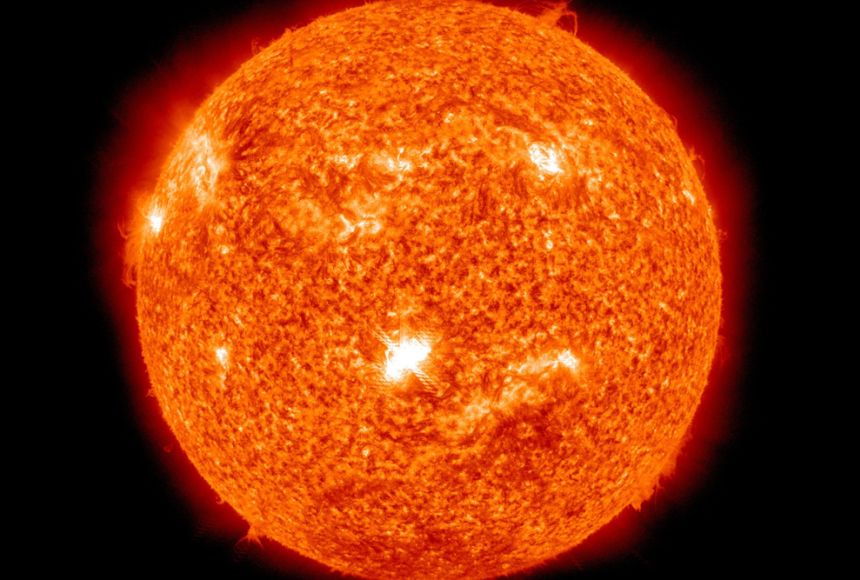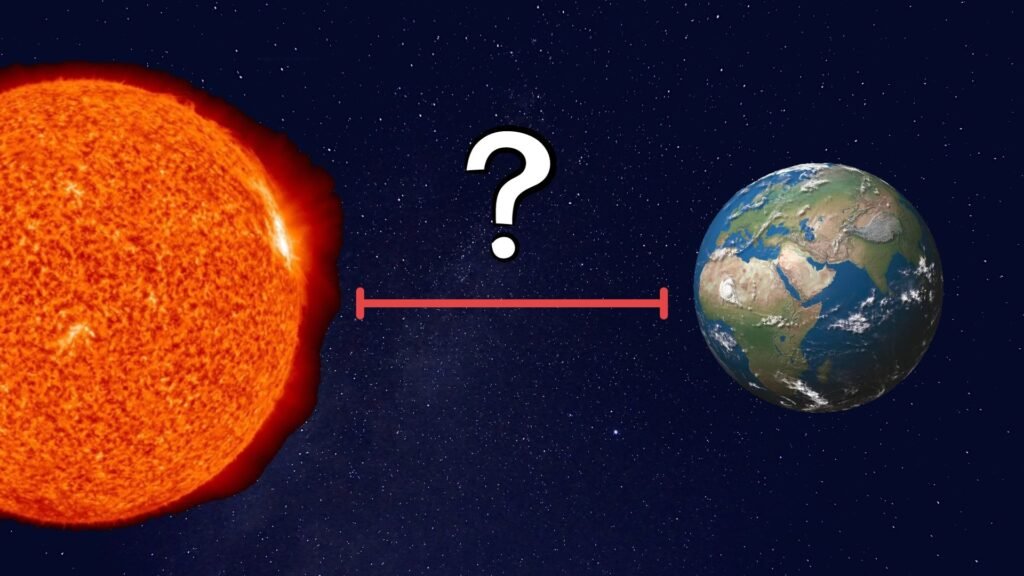Table of Contents
ToggleTop Facts About the Sun: A Comprehensive Exploration
Beyond being the star at the core of our solar system, the Sun is more. It is an intriguing celestial object that has a significant influence on the weather, daily life on Earth, and even the existence of life itself. We will explore some of the most fascinating details of the Sun in this blog article, including its mysteries, its significance to our solar system, and its impact on life as we know it on Earth.

Nuclear fusion, which releases enormous amounts of energy when hydrogen atoms fuse to make helium, is how the Sun produces energy at its core. The radiative and convective zones of the Sun are traversed by this outward-moving energy before it reaches the photosphere, or surface.
The Sun’s outer atmosphere, known as the corona, is located above the photosphere. During solar eclipses, the corona is frequently visible as a shimmering halo even though it is hotter than the surface. Solar flares, coronal mass ejections, and sunspots are examples of remarkable solar events produced by the Sun’s magnetic field that can affect terrestrial communications and space weather.
The solar system is held together by the gravitational attraction of the Sun, which also controls the orbits of planets, moons, and other celestial bodies. Earth is habitable because of its heat and light, which also influence weather patterns and allow photosynthesis to continue.
Power grids and satellite operations are impacted by space weather, which is also influenced by solar energy. Comprehending the nature of the Sun aids scientists in forecasting solar storms and mitigating their impact on infrastructure and technology.
It is predicted that the Sun will continue to exist in its current stable phase for a further 5 billion years, giving it an estimated age of 4.6 billion years. It will eventually cool down over billions of years and transform into a red giant before losing its outer layers and becoming a white dwarf.
Here’s Some Amazing and Interesting Facts about the Sun
1. The Sun’s Composition
Helium and hydrogen make up the majority of the Sun’s composition. Actually, hydrogen makes up roughly 74% of its mass and helium about 24%. The heavier elements, such as oxygen, carbon, neon, and iron, make up the remaining 2%. These elements contribute to the Sun’s total energy production and are essential for a number of solar processes.
2. Dimensions and Range
The Sun is much larger than the Earth. Its diameter is approximately 109 times greater than that of Earth, measuring 1.39 million kilometers (864,000 miles). The Sun would be around the size of a typical bus if Earth were a nickel. It is so large that about 1.3 million Earths could be contained within its volume.
3. Distance from Earth
The Sun is typically located 150 million kilometers, or 93 million miles, distant from Earth. The astronomical unit (AU), which is used to measure distances within our solar system, is equivalent to this distance. Since it takes light from the Sun eight minutes and twenty seconds to reach Earth, the Sun appears to us as it did somewhat more than eight minutes ago.
4. The Sun’s Energy Production
The process of nuclear fusion, which takes place in the Sun’s core, produces energy. Helium is created in the core when hydrogen atoms combine to release a tremendous quantity of energy in the form of heat and light. The Sun produces so much energy, which is what gives Earth’s life support systems the warmth and light they need to function.
5. Solar Atmosphere Layers
The atmosphere of the Sun is separated into multiple distinct layers:
Photosphere: The photosphere is the portion of the Sun that is visible and emits light.
Chromosphere: The chromosphere is the layer that sits above the photosphere and appears as a crimson glow during a solar eclipse.
Corona: The corona, which reaches millions of kilometers into space and is visible during a total solar eclipse, is the outermost layer of the Sun’s atmosphere.

6. Solar Activity and Sunspots
On the surface of the Sun, sunspots are darker, colder areas brought on by magnetic activity. They can affect solar activity, such as solar flares and coronal mass ejections, and they show up as dark spots. The sunspot count fluctuates according to a roughly 11-year pattern called the solar cycle. Sunspot numbers are higher at solar maximums, times of increased solar activity.
7. Solar Flares and Coronal Mass Ejections
Strong radiation flares known as solar flares are produced when magnetic energy on the surface of the Sun releases. These flares have the potential to interfere with satellite communications and space weather. Large-scale plasma and magnetic field expulsions from the Sun’s corona are known as coronal mass ejections, or CMEs. They have the ability to produce auroras and geomagnetic storms when directed toward Earth.
8. The Magnetic Field of the Sun
The Sun’s strong magnetic field affects both space weather patterns and solar activity. The motion of charged particles within the Sun’s interior produces this magnetic field. The magnetic north and south poles of the Sun alternate every 11 years during a periodic reversal of the magnetic field.
9. The Sun’s Life Cycle
The Sun is in the middle of its life cycle and is around 4.6 billion years old. It is categorized as a main-sequence star (G dwarf) of the G-type. It’s anticipated that the Sun will continue to exist in this stable state for an additional 5 billion years until its hydrogen fuel runs out. It will eventually shed its outer layers and become a red giant, expanding into a white dwarf in the last stages of its life.
10. Solar Influence on Earth’s Climate
The climate of Earth is greatly influenced by the Sun. Changes in solar radiation have the potential to impact long-term climate trends. For instance, colder climate periods on Earth, known as the Little Ice Age, have been linked to times of decreased solar activity, such as the Maunder Minimum in the 17th century.
11. The Sun’s Role in Space Weather
Space weather is influenced by the Sun’s activity and can have an effect on humans, spacecraft, and satellites. Radiation storms and geomagnetic disturbances brought on by increased solar activity have the potential to disrupt satellite operations and communication networks.
12. Solar Energy and Its Uses
Solar energy is a clean, renewable energy source that is obtained from the Sun’s beams. Solar energy systems provide a sustainable substitute for fossil fuels by converting sunlight into electrical power. Numerous things can be powered by solar energy, including buildings, companies, and even spaceships.

13. The Sun in Mythology and Culture
The Sun has been very important in culture and religion throughout history. Numerous historical societies, such as the Greeks, Aztecs, and Egyptians, revered the Sun as a god. The Sun was frequently thought to be the source of creation, fertility, and life.
14. The Sun’s Influence on the Solar System
All of the planets and other solar system objects follow their orbits due to the Sun’s gravitational attraction. Its gravitational pull preserves the solar system’s stability and structure by holding the planets, moons, asteroids, and comets in their proper orbits.
15. Exploration and Observation
Many techniques have been developed by humanity to observe and study the Sun. Space projects like the Solar and Heliospheric Observatory (SOHO) and the Parker Solar Probe offer important information on the Sun’s activity and how it affects space weather. Additionally tracking solar events and advancing our knowledge of the Sun’s behavior are ground-based observatories.
Conclusion
The Sun is an amazing and intricate celestial body that has a significant influence on both life on Earth and our solar system. Astronomers and scientists are still fascinated by the Sun because of its enormous size, ability to produce large amounts of energy, and impact on space weather and climate. Comprehending the features and actions of the Sun not only aids in our understanding of its place in our solar system, but also highlights the significance of solar study for future space travel and scientific progress.
We are learning a great deal about the nature of the Sun and how it affects the larger universe as we investigate and study it further. The Sun is still a major subject of scientific study and a representation of the colossal strength and beauty of the universe.

